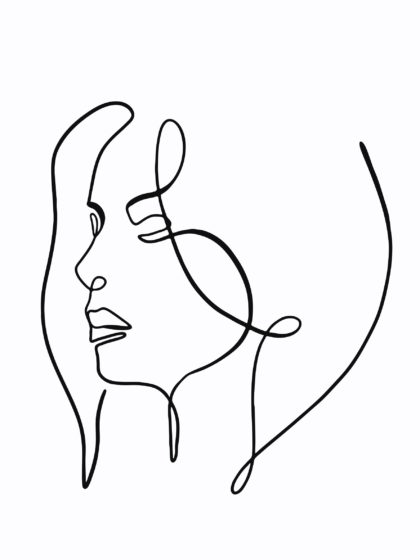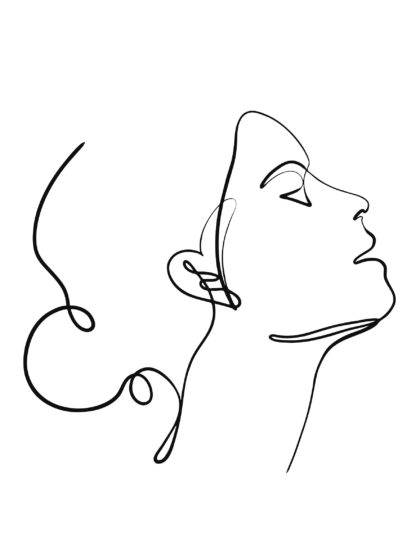The reality is, NFTs and blockchain have come to help art and artists


So, it’s 2022 and it seems like everybody has to have a plan for the Web3, blockchain, cryptocurrencies and, of course, NFTs (Non-Fungible Tokens). Because there is a lot of noise around the NFT space, many might be forgiven for a natural, healthy scepticism. “Is this overhyped? Is this just a fad”, one might ask. Well, when enough time passes, those NFT projects that are true to the promise of blockchain and Web3 will remain. Just like the dotcom bubble, it’s not just about being in the ecosystem, it’s about understanding the value that it has. Classic art might have found itself an ally in the digital landscape, after all
Let’s go back in time to the inception of the Internet. What has been a major pain for artists —and creators, generally— throughout all of this time? Intellectual property, copyrights and authenticity are just some of the major concerns that have emerged as a consequence of the ability to save, share and connect almost every piece of creative output that’s available online. Blockchain comes to solve this issue.
The tokenization of a JPG file, and putting it on the blockchain, makes sure that this piece of art (and more general, content) has an author attached to it for everyone to see. And of course, there will be ownership attached to it. You can see who is the owner of a piece of digital art at any given point thanks to the token attached to it. Digital art can therefore become more appealing to potential investors, and help the artists behind them to actually get compensated for the work they have put in. In addition to this, you have to consider a big part of the name: The non-fungible part of it. This means that each token is unique, and you cannot assign equal values between them.
What is the principle behind NFTs
Let’s take another backwards jump in time, to the time when Bitcoin was invented. The whole purpose was to create a monetary instrument that would mimic gold in terms of scarcity, and take away the ability of governments to create more of it. Hence, Bitcoin came about and the blockchain technology behind it. Same principles of a registry of who owns which bitcoin apply. When considering NFTs, you are going to have to consider the before-mentioned issue of non-fungibility. One bitcoin will always equal another bitcoin. Not the case with art tokens (innovated by Ethereum, which appeared after Bitcoin)
When you consider the fact that you can have a limited collection of an NFT, and the concept of non-fungibility kicks in, you have effectively created the concept of scarcity into the digital realm. Scarcity is only valuable as long as the owner of the asset is authenticated, and the asset in question is of the source that it says it is. Here is how “old”, classic art benefits
How does NFTs help the arts?
So now we know that NFTs have actually allowed the industry of creativity to protect its assets, let’s take a look at how this impacts the industry of arts. Most artist have a physical piece, and then that might run the risk of losing value once it gets on the Internet. What if the physical painting (or piece) could become a token so that, as it gets shared on the Internet, people always know that there is an actual original?
There is a very direct example that is used in the NFT world. Why do people visit the Louvre Museum? About 80% do so to see the Mona Lisa (Gioconda). And there are many images online depicting the famous Leonardo Da Vinci painting. This means that even if you are not in Paris, you could see the picture from your mobile phone just this moment, all you would have to do is do a search on it. But people want to see the real, authentic painting. If you are an art collector, as you buy paintings of your choosing, you are not going to mind people having replicas as long as you have a certificate that authenticates your painting as something real.
Thanks to the ability to attach a token to the digital artwork, investors can claim ownership and artist can authenticate themselves as the creators.
So now, thanks to Web3 (the ecosystem within which blockchain, cyrptocurrencies, NFTs and the metaverse will exist), one has the very real possibility of acquiring a physical painting and its corresponding token. Visiting an art gallery in the metaverse and having a complete experience within its realm is absolutely possible. This move onto the metaverse (or many metaverses) is one that will protect the acquisition of NFTs. Like going to the actual museum, people will visit art galleries in the metaverse. Displayed in these virtual galleries, you will have original digital artwork. Such is the case of the Somnium Prucha Gallery in the metaverse, a family-owned gallery that took the leap of venturing onto Web3. Now, just because what you see in display in this metaverse is digital, doesn’t mean that it isn’t classic art. Visual and plastic artists put in traditional work, and then with top-tier scanning technology that artistic piece gets transformed into a token.
If you are ever to buy an NFT but still are unsure about it, you should ask yourself: what will the world tomorrow look like? Will it be a more digitalized world where digital asset ownership makes sense? Once you get in that frame of mind you could start at secondary markets like OpenSea, where SOPRG has artwork available. And just get yourself acquainted with the issues that NFTs solve. Then you will be able to get into the NFT space without speculating.

